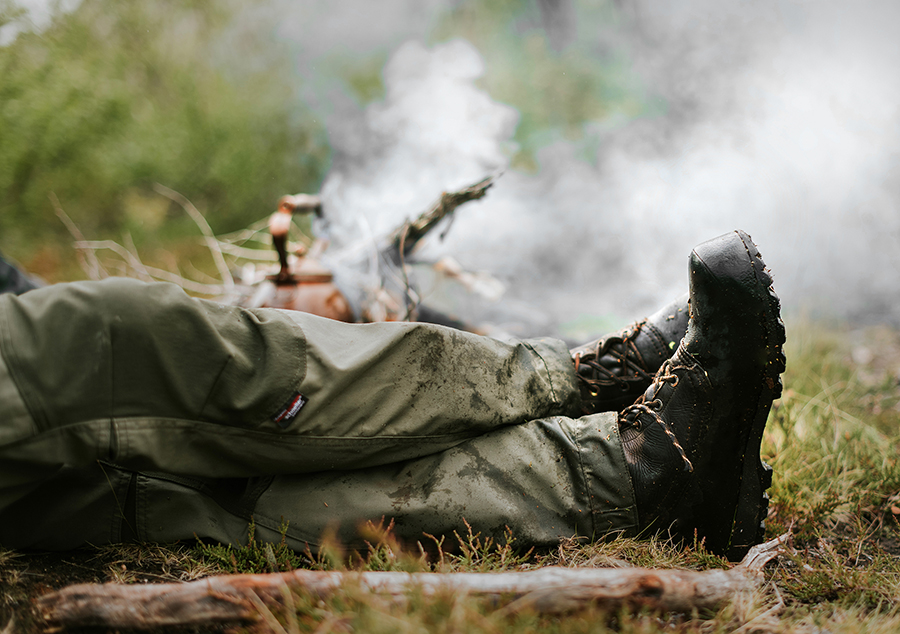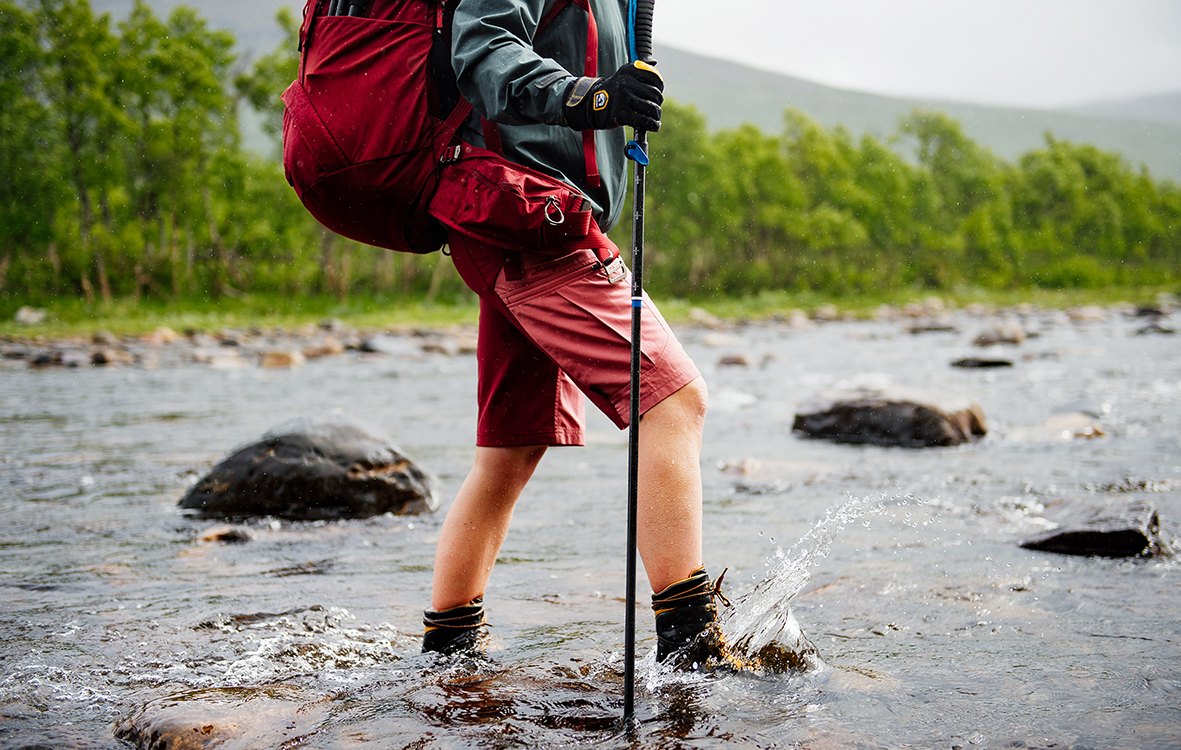Skip the blisters
Everyone who has had blisters knows that blisters can ruin their, and actually that of others, hiking experience. We chatted with our Lundhags friend Urban Axelsson, wilderness guide, who spends more time in hiking boots and pants than most people.
What should one think about when it’s time to buy boots?
– Go to a shop with knowledgeable staff. People who have done this for a few years will want to look at your feet first. Then they will go to what you want to use the boot for. And then they can pick which boot is suitable.
– You cannot test walk the boots a few kilometres at the shop, but certain shops have short terrain courses to test walk. Put on a backpack with some weight inside so that you can feel how the boots wear. Try uphill and downhill to feel if your foot wants to move forward or doesn’t sit right.
How does one prepare for a hike?
– Use the boot right away, daily. To and from work, on walks, short distances. You’ll feel pretty soon if it chafes somewhere and get an idea if you should tape the feet as a precaution before a hike.
How do you think when you’re out hiking?
– Take breaks and air your feet as often as you can. Dry feet are happy feet. Remove the boots and socks as soon as you stop. If you have the chance to change to dry socks, do it.
But then you stand there without having prepared for the hike?
– Ok, then you think better safe than sorry. Tape your feet if know that you usually get blisters. And pay attention already from the start. The smallest sign of chafing has to be taken care of immediately. You have no reason to tough it out until lunch. At the slightest gnaw and you feel the beginning of a hotspot, fix it.
But if it’s already gotten bad and the blisters have burst and the sores get deeper?
– I always have creams for the guests as a preventive measure. It doesn’t seem like such a bad idea. But I haven’t needed it myself. Otherwise, I work with sport tape and spray plasters. If there is a hole in the skin, wash with water and soap. Carefully. Then I spray on a plaster and place Leukoplast tape on the outside. Spray plasters hurt like heck. Put a stick in your mouth, just like the cowboys do in the movies, and just start spraying. But then you can actually get going, it often works well.

Six chafing tips
The boot
Be careful to choose a boot that suits your feet. If it doesn’t feel good when trying them in the shop, it will never feel good. You can certainly “go in” your boots, but only to a certain point. The better the boot fits, the better the hiking experience will be. Keep in mind that the boot should have space for two socks (see below under “soft goods”) and that the feet will be about half a size larger when they get warm.
Prepare yourself
Before setting off on a longer hike, walk a lot in your boots. Use them daily and your feet with get accustom to their shape. Further, you’ll get an indication of if and where you can eventually expect blisters. Place sport tape as a precaution.
Soft goods
Layer-on-layer works even for feet. Wear a thin liner sock closest to the foot. Outside that, a slightly thicker sock to reduce friction between the boot and foot. The best sock material is merino wool, which can retain much water without losing its insulating capabilities. Further, merino wool handles the odor problem better than other materials. Simply remove the socks and soles when they get wet. You can find more information on choosing the right sock here. Click the link
https://www.lundhags.com/se/journal/wear-care-produktguider/kangguide/sa-valjer-du-ratt-socka/
Pedicure
It is never wrong to tend to one’s feet. It is extra important when hiking. Cut long toenails and cut them just short enough to not get an ingrown toenail. Rub the feet with a thick cream and file away any eventual thick calluses. But do not overdo it, the skin should not be too thin, just supple. Make sure that your feet get accustom a few days after you have cut your nails and filed them. Air your feet during the hike and change to dry socks when the opportunity arises.
If I knew then what I know now
Sometimes, you are still careless and the blister is fact. There is an abundance of blister platers that work differently in differently conditions. Test and try and see what is best for you. If you get an open blister, remember to wash carefully. Soap and (clean) water work well. After, apply a spray plaster. Cover with, for example, Leukoplast tape and be careful of large folds. Tape a distance away from the blister and the tape will stay better.

What is a blister?
A blister is a rubbing injury. Pressure and strain tear up the contact between the epidermis and dermis (outer skin and inner skin). A blister often forms, but a sore can occur immediately. Blisters often depend on boots that are too small or too large, incorrect fit, difficult feet, moisture or friction.
To puncture or not to puncture? That is the question.
When you get a blister, the sore is a fact. People have been disputing whether or not a blister should be punctured since time immemorial. Essentially, it is best for the epidermis to be intact and not allow unnecessary bacteria to enter. The problem is that when a blister has developed, it is difficult to continue hiking without the entire epidermis wearing away if you do not puncture it. Hence, many maintain that it is better to carefully puncture the blister with a clean needle and then place sport tape or blister tape to keep the epidermis in place. But as said, this is where the dispute lies.
